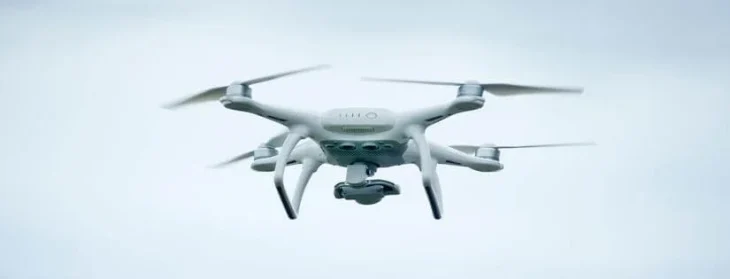The everchanging surveillance industry
- Home
- Blog Details

- February 27 2024
- admin
Let’s get this straight, when you possess something, you are bound to keep an eye on it. Sometimes track, monitor, and overall, keep a check with prying eyes. The era of human resources such as watchmen or guards with their watchful presence is over. Security and surveillance have come a long way. Amidst the everchanging world of technologies, the surveillance market has changed dramatically over the last decade. The times of CCTV cameras to secure business has paved the way for more complex systems designed to address modern-day necessities.
As the cameras evolve with changing times, the video surveillance camera also keeps on evolving, with more advanced embedded analytics. The catch is that it is reducing the size of storage infrastructures but increased the cost and technical complexities of the camera. With an emphasis on the rise of smart video surveillance cameras, IDC believes the market is likely to surpass $15 billion by 2025.
By the way, such rapid advancement is not limited to just fixed surveillance cameras. The journey of drone, from just a flying toy to one of most pioneering tools, has catapulted it at the forefront of the surveillance industry arena, and a drone’s importance has increased several folds.

The new era of video surveillance
Market research reports suggest that global video surveillance industry generated a revenue of $37 billion in 2018 and is estimated to grow at a rate of 17% in a span of 5 years to achieve $77.21 billion by 2023. With the increasing demand of the internet protocol (IP) cameras for home and retail security, the video surveillance market has witnessed a spike in growth and is expected by three folds over the next decade. With more necessity for crystal image resolution and perimeter surveillance, adoption of intelligent video surveillance cameras has increased
A recent report published that retail crime is now costing the industry over $600 million a year. This is one of the deciding factors that propelled the surveillance and security and drone sector to a new level to keep up with modern-day market demands. As criminals have become a lot more upgraded, the companies were losing out as a result, and this pushed for more complexities in the surveillance industr
In a bid to counter such coming-of-age criminal activities, the surveillance industry, along with its technology partners, needed to improve and upgrade system capabilities. The single-camera and tape recorder were not enough to meet such demands in the 21st-century. Now, industry leaders are required to bring a whole lot more to the table than what was expected just a decade ago.
In a bid to counter such coming-of-age criminal activities, the surveillance industry, along with its technology partners, needed to improve and upgrade system capabilities. The single-camera and tape recorder were not enough to meet such demands in the 21st-century. Now, industry leaders are required to bring a whole lot more to the table than what was expected just a decade ago.
Companies and even government establishments must fully evaluate their primary objectives, end goals, and understand the technology, both software and hardware, required to achieve the aforementioned goals successfully.

Storage, benefit and Internet of Things
Recently, after analyzing the future of data and associated factors, Seagate and IDC published a whitepaper stating that the worldwide data will explode to more than 100 zetta bytes by 2025. One of the significant reasons for this surge in data is the emergence of connected devices because of the IoT (Internet of Things). With the increase in the number of transactions being created and tracked, it is pivotal to ponder upon how such a massive amount of data can be managed.
There is a good investment in connecting devices these days and more and more organizations are inspecting how these IoT devices will function, interact with people, what other opportunities can be created as a result and what are the areas that need improvement. There have been discussions about smart cities, such as Tokyo or Seoul, and how information relayed in real-time through connected devices and cameras would help provide insights to planning personnel and emergency units to chalk up better plans for public services.
The video security and surveillance industry has evolved into a much more advanced and complex network system than what it was a few decades ago. For example, retailers have resorted to heating mapping sensors, and data from cameras are used to scrutinize real-time footfall, which helps in supervising and overseeing the layout of their stores to provide a more enjoyable, secure shopping experience.
However, there are few factors hinder the growth of this industry and it include:
- Threat of data breach
- Cyber privacy concerns
- Burden of data storage on agencies
- Demand for high speed and better network connectivity
Businesses must take into account a lot more than what surveillance camera they’ll be using, which includes the kind of hardware & accessories required for a particular task in hand if they wish to take advantage of modern surveillance benefits. For organizations that prefer to outsource their surveillance department to a third-party vendor, they must find the right strategic partner who fits the requirements and identify what storage base is suitable for them. This ensures the application of modern surveillance and analytical benefits which should positively impact their employees, customers, and business.
The surveillance industry is evolving drastically in a much more sophisticated and complex way than it has in the previous decades. For businesses to take advantage of modern surveillance system benefits, they need to:
- Look further than just surveillance cameras and focus on supporting hardware as well.
- Put some emphasis on unmanned surveillance systems such as drone technology.
- Examine the possibilities of IoT and the kind of database fit for the resulting amount of information.
Reference:
https://www.marketresearch.com/BIS research
Dr. Craig Donald, http://www.securitysa.com/8916a

